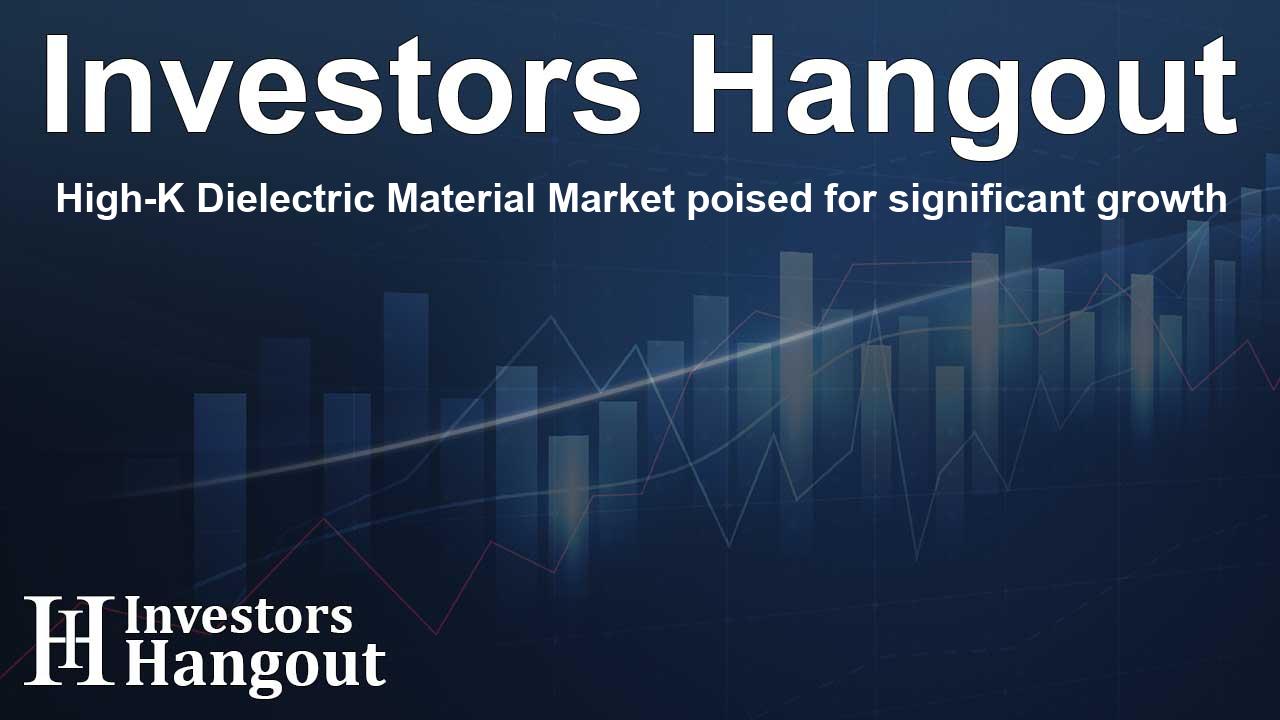High-K Dielectric Material Market poised for significant growth

Growth Potential of High-K Dielectric Material Market
The High-K Dielectric Material Market is set for remarkable expansion, with projections indicating a rise to USD 3.75 billion in the coming years. This compelling growth is primarily fueled by an insatiable demand from the semiconductor and electronics sectors.
Market Dynamics and Trends
High-K dielectric materials, known for their superior insulating properties, are becoming increasingly vital in semiconductor fabrication. These materials play a pivotal role in transitioning from traditional insulators, enhancing the performance of logic chips and memory devices. Advanced processes such as Atomic Layer Deposition (ALD) are commonly employed to apply these materials, leading to significant improvements in electrical efficiency and power consumption.
Current Market Value and Future Growth
As of last year, the market was valued at approximately USD 1.67 billion and is anticipated to witness a compound annual growth rate (CAGR) of 10.63% between now and 2032. This trend is influenced by the rapid miniaturization of chips—specifically at processes like 5nm, 3nm, and even 2nm. The industry is seeing continuous innovation, exemplified by Applied Materials' utilization of ruthenium in the 2nm manufacturing process, showcasing how high-K dielectrics can help in minimizing gate leakage and optimizing device performance across multiple applications, including mobile, AI, and data centers.
Regional Market Insights
The Asia Pacific region commands a substantial 50% share of the high-K dielectric materials market, with significant contributions from semiconductor giants and a thriving electronics manufacturing sector. Countries like China, Japan, South Korea, and Taiwan lead this growth due to their robust investments in technology and manufacturing.
North America is set to emerge as the fastest-growing region, driven by a CAGR of 12.60% from 2025 to 2032. This surge is attributed to increasing semiconductor investments and the rising demand across various sectors including defense, automotive, and consumer electronics, with the United States playing a leading role in innovation.
Europe, particularly Germany, is also witnessing positive momentum thanks to its strong industrial base and innovation in automotive electronics. Meanwhile, regions like LATAM and MEA are expanding their market presence, responding to increasing demands in automotive and renewable energy sectors.
Material Segmentation and Applications
Within the high-K dielectric materials market, hafnium oxide remains a cornerstone, holding a 41% market share. Its unique electrical properties enable it to effectively minimize leakage current in advanced semiconductor devices. This segment is witnessing the fastest growth, eclipsing a CAGR of 12.58% as it finds applications in energy-efficient technologies and cutting-edge electronics.
Impact of End-User Demand
The semiconductor segment dominates, capturing 52% of the market, as the need for advanced devices in AI, IoT, and 5G accelerates. High-K dielectrics are instrumental in improving device performance while catering to the scaling needs of these next-generation chips.
Moreover, in 2024, the electronics segment represented 49% of the market, driven by the demand for compact, energy-efficient consumer products, including smartphones and wearables. The automotive sector is also increasingly adopting high-K dielectrics, anticipating a growth rate of 14.02%, aligned with the rise of electric vehicles and autonomous driving technologies.
Competitive Landscape
Leading players in the high-K dielectric materials market include global giants such as Samsung Electronics, TSMC, Intel, SK Hynix, Micron Technology, and Applied Materials. Each of these companies is investing significantly in R&D to foster innovation and enhance their market positions. For example, Intel's recent commitment of up to USD 1.5 billion for upgrading its manufacturing capabilities illustrates the competitive nature of this market.
Such investments not only consolidate their standing within the semiconductor industry but also pave the way for advancements in semiconductor technology and high-K dielectrics.
Frequently Asked Questions
What is the High-K Dielectric Material Market Size?
The market is valued at USD 1.67 billion as of 2024 and is projected to reach USD 3.75 billion by 2032.
What are the key growth drivers for this market?
The demand for smaller, faster, and energy-efficient electronics, alongside advancements in semiconductor technology, drives growth.
How significant is the Asia Pacific region in this market?
Asia Pacific holds a dominant 50% share of the market, led by major semiconductor manufacturers and investments.
Which segment is witnessing the fastest growth?
The hafnium oxide segment is growing rapidly at a CAGR of 12.58% due to its effective insulation properties.
Who are the leading players in the high-K dielectric materials market?
Key players include Samsung Electronics, TSMC, Intel, and Applied Materials, all of which are active in R&D for innovation.
About The Author
Contact Logan Wright privately here. Or send an email with ATTN: Logan Wright as the subject to contact@investorshangout.com.
About Investors Hangout
Investors Hangout is a leading online stock forum for financial discussion and learning, offering a wide range of free tools and resources. It draws in traders of all levels, who exchange market knowledge, investigate trading tactics, and keep an eye on industry developments in real time. Featuring financial articles, stock message boards, quotes, charts, company profiles, and live news updates. Through cooperative learning and a wealth of informational resources, it helps users from novices creating their first portfolios to experts honing their techniques. Join Investors Hangout today: https://investorshangout.com/
The content of this article is based on factual, publicly available information and does not represent legal, financial, or investment advice. Investors Hangout does not offer financial advice, and the author is not a licensed financial advisor. Consult a qualified advisor before making any financial or investment decisions based on this article. This article should not be considered advice to purchase, sell, or hold any securities or other investments. If any of the material provided here is inaccurate, please contact us for corrections.
